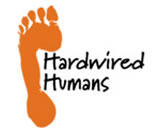Services
Our services focus on helping organisations align their leadership practices to human instincts.
If we know about human instincts we can lead more effectively, we can implement change with less anxiety and distraction and we can design HR practices that work more naturally.
By integrating the disciplines of psychology, anthropology and primatology, we can identify the 9 basic instincts of humans. With this framework leaders can better make sense of people’s behaviour and as a consequence more informed choices knowing what will work and what won’t. Why not use the force of Nature to make leadership and change management easier and more effective.
Mostly clients use our services for workshops and coaching – workshops to learn and apply the framework for leadership, for implementing change and for HR professional development and designing HR practices.
Leadership Development
Most leaders find it’s the people dimension of their role that’s the more frustrating and the most unpredictable. And the one that most determines success. A framework helps. Whereas leaders have frameworks for their professional (technical) parts of their job, they tend not to have one for the people dimensions. The framework of 9 human instincts gives leaders an approach that is both scientifically robust and practically applied – it makes sense and it’s practical.
For example, when leaders learn about the importance of grooming in order to bond, they realise the significance of this practice for harmonious relationships. Every social species grooms. The chimpanzees do so physically. With our incredible vocal capability, we do so through chit-chat. Individuals can’t be bonded unless they engage in grooming.
One leader solved team tension by way of grooming. Four months after attending one of our programs he reported his realisation that his team spent no time bonding so no wonder there was tension – they didn’t know each other. From the first week after the human instincts workshop he started a weekly team coffee catch-up that soon became a ritual. The exciting thing to the leader is that he suddenly saw an action he could take to fix the problem. He said, “I used human nature. All I had to do was to establish the environment where human nature could do its thing.”
Download the PDF for a summary for using human instincts for leadership development.
Implementing Change
In the 100 years of leadership practice, one subject we haven’t yet solved is change management. We generally experience the same frustrations of leading changes in our organisations and we tend to repeat the same mistakes – certainly in the eyes of our people!
A key reason for this frustration is that we ignored, or at best misread, that what really happens when humans face change.
Conventional thinking about change is that “people resist change”. That’s not true – if it was we’d be still living in caves. It looks like people resist change but that’s not what is actually happening. Once we know what actually happens it transforms our approach to leading change.
For example, a key element of how people process change is that we are compelled to make sense of how a change might affect us. We make sense by classifying based on how we feel. If when we first hear about a change we don’t specifically know how it might affect us, we tend to assume the worst. This process is a combination of Emotion Before Reason. First Impressions to Classify and Loss Aversion. A specific action from this human process is what we call “Influencing the Classifying Moment”.
Once we know about human nature there are 9 Essentials for Leading Change Using Human Instincts,
Download the PDF for a summary for using human instincts to lead change.
HR Professional Development
Irrespective of the organisation, the industry or the country, organisational challenges are uncannily similar from one organisation to another. Leaders experience silo behaviour and internal rivalry, challenges implementing change, problems due to the informal grapevine, challenges with the performance appraisal system and difficulties for managers giving negative feedback.
These challenges are explained by human instincts. And once we can make sense of the challenges HR teams can make informed choices to align their HR practices to human nature. Where HR practices are aligned to human nature they just seem to work. Where they are poorly aligned, HR teams have to act as police officers forcing compliance. Why not use the force to human nature?
For example, we can design our organisation to be functional or dysfunctional. Functional design, like an engineer designing a system, will use natural forces. These natural forces of design are based on the size of groups where people gain their sense of identity and belonging. In part, group size relates to the size of the human brain.
Knowing the human instincts framework helps HR teams decide appropriate actions that will make the biggest difference. The human instincts workshop provides a memorable professional development experience and one that bonds people with a common language.
Download the PDF for a summary for using human instincts for HR professional development.

